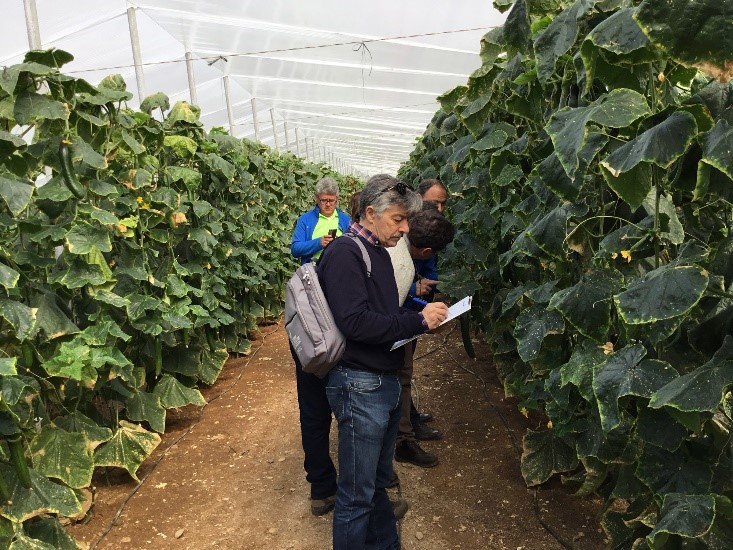Plant Health: Demand-Driven Fertilization and Its Big Potential
Efficient fertilizer use and optimized plant nutrition have never been more urgent in a world of ever-growing food demand and increased limitations on commercial fertilizers.
One solution that has been overlooked — not due to being irrelevant but perhaps due to being discovered in the “wrong” niche of plant production — is the concept of demand-driven fertilization. In other words, supply all essential plant nutrients on demand throughout the whole growing season after taking into account the nutrient-delivery capacity of the soil and then adjusting for the aims of the growers.
Of course, this is what most precision fertigation programs aim for, based on the correct understanding of plant nutrition and the soil/plant system.
However, there are some unique aspects and profound science behind the concept that differentiate it from other kinds of precision fertilization.
Demand-driven fertilization is a plant nutrition and fertilizer management concept based on Wallenberg Prize-winning research. This is essentially the Nobel prize for forestry that was handed to ingenious Swedish researcher Torsten Ingestad by the King of Sweden for his path-breaking discoveries in which balancing mineral addition with the internal nutrient needs of the plant results in maximized production and minimum adverse environmental impact.
Two Discoveries
One of the big discoveries lies in the fact that, when it comes to the internal ratios of the 14 essential plant nutrients, they are surprisingly similar for all land-living plants. This is due to the fact they share very similar physiology. More relevant than species when comparing species is what plant tissue will be harvested. For fruit and root vegetable production, there will be a higher need for potassium compared to grains and typical agricultural crops.
On the other hand, the absolute quantitative need for micro- and macronutrients over a growing season is very much determined by species. However, it is the morphology rather than the physiology of the plant that makes the difference. In other words, aspects that affect growth rate, such as leaf thickness and proportion of the plant that can take part in the photosynthesis, will determine growth capacity.
The second big discovery is that, if the plant nutrition is applied in accordance with the growth pattern of the plant, one can actualize maximum growth rate and fertilizer use efficiency. Put simply, the fertilizer doses are supplied at the same rate as the relative growth rate of the plant (i.e., the percentage increase of biomass over time).
In practice this means there is exponential growth up until a peak of the growing season, when the plant will reach maximum growth rate. After that, the growth rate will decline some due to aging, self-shading, etc. The nutrient supply should thus be applied according to the same pattern. When this is done, some astonishing things are enabled.
Serious Implications
Demand-driven fertilization provides the possibility to control which part of the plant one wants to benefit, depending on crop and production goals. It can be pushed to enable maximum growth rate or to enhance fruiting. At the same time, it minimizes fertilizer use and environmental impact.
The principles of demand-driven fertilization are simple and universally applicable, which is important because precision agriculture sometimes must be done without precise knowledge of soil and water quality.
 This has serious implications for fertilizer use, both in open-land farming and high-tech dependent systems. In open-land farming it is important to balance the fertilizers correctly and spread out the total amount over as many occasions as logistics and economics permit. In high-tech precision systems one needs to identify the exact fertilizer balance and then apply it according to the growth pattern over time. No application could be more accurate, efficient, productive, and environmentally friendly. (For correct balancing and application, see the table above.)
This has serious implications for fertilizer use, both in open-land farming and high-tech dependent systems. In open-land farming it is important to balance the fertilizers correctly and spread out the total amount over as many occasions as logistics and economics permit. In high-tech precision systems one needs to identify the exact fertilizer balance and then apply it according to the growth pattern over time. No application could be more accurate, efficient, productive, and environmentally friendly. (For correct balancing and application, see the table above.)
What makes the discoveries so special and applicable is that the concept is based on a mechanistic understanding on a very high level, which is then verified in extensive field trials, further tested for applicability in commercial-like production systems, and finally proven in many areas of plant production.
Time will tell if this becomes one of the best tools to improve the sustainability and efficiency of crop production systems.






